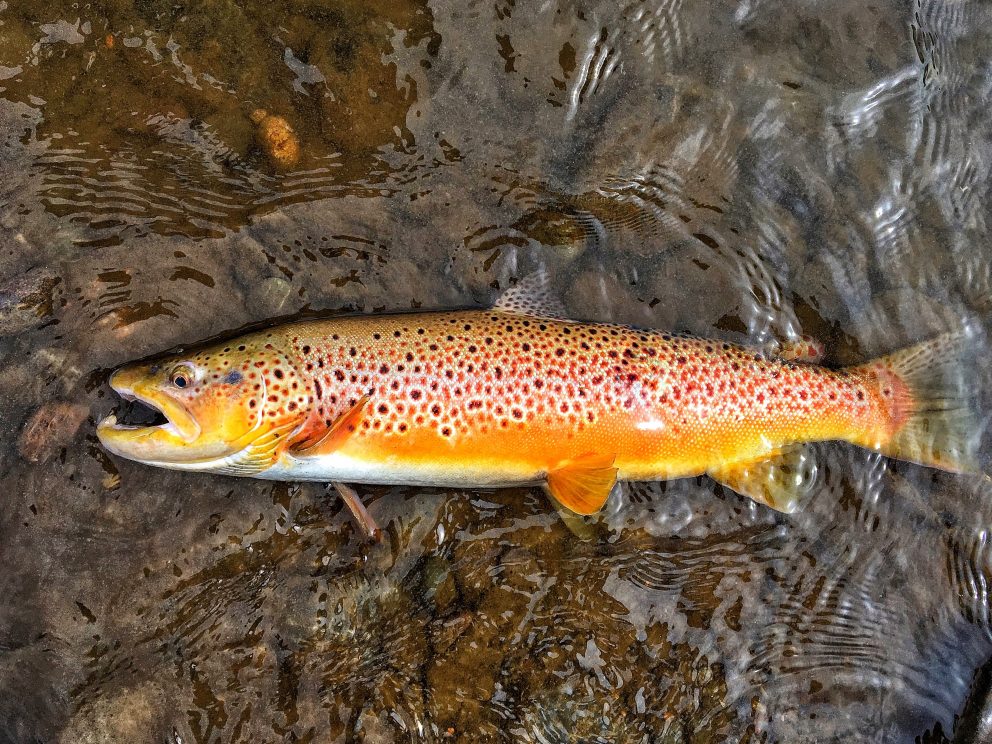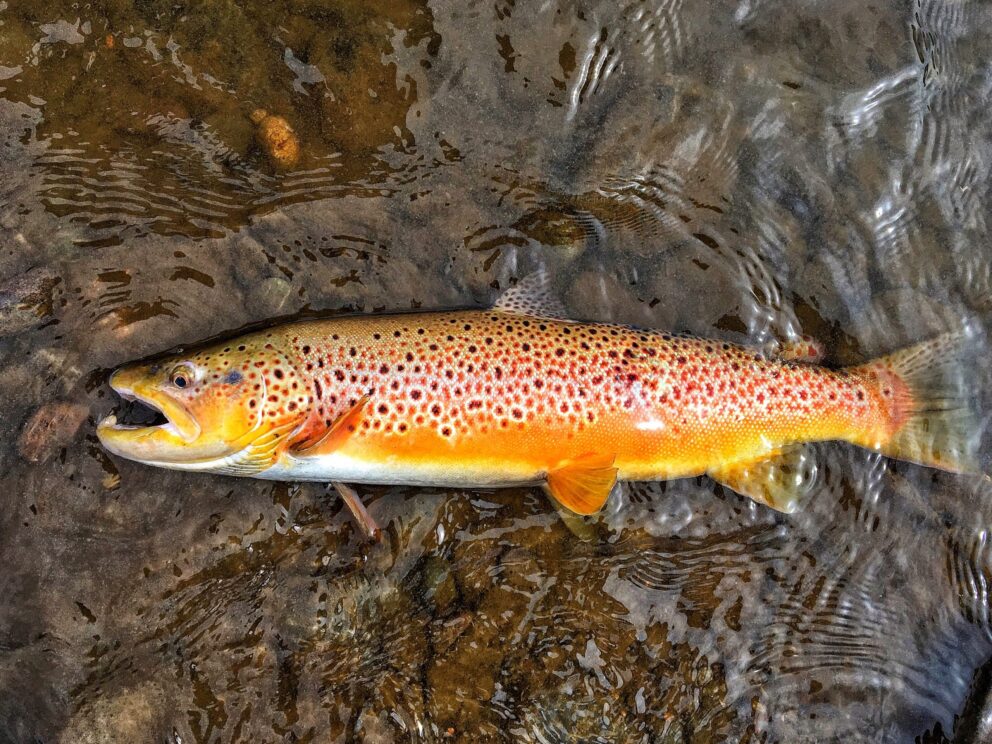- SCIENTIFIC NAME
- Salmo trutta
- CLASSIFICATION
- Fish
- LIFE SPAN
- 8-20 Years
- SIZE
- 12-33” | 1-28lbs
- STATE CONSERVATION STATUS
-
- Unprotected
- FEDERAL CONSERVATION STATUS
- Least Concern
- GAME STATUS
- Game
- Washoe
- Humboldt
- Pershing
- Churchill
- Mineral
- Lyon
- Douglas
- Carson City
- Storey
- Elko
- Lander
- Eureka
- White Pine
- Esmeralda
- Nye
- Lincoln
- Clark
Habitat & Range
Brown Trout are native to western Asia and Europe. It was first brought to North America in the early-1800’s and has subsequently been introduced extensively throughout the United States. Brown Trout occur widely in central and eastern Nevada streams and occur in about 112 waters statewide. It can also found in some lakes and reservoirs throughout northern Nevada.
Threats
- Bacterial Cold Water Disease
- BKD- Bacterial kidney disease
- Diseases in Hatchery Stocks: IHN-Infectious hematopoietic necrosis
- VHS-Viral hemorrhagic septicemia
- Whirling Disease
Natural History
The Brown Trout’s native range extends from northern Norway to North Africa. The first batch of Brown Trout eggs were distributed to several U.S. hatcheries in 1883, they were then introduced into many suitable waters across the U.S. between 1884 and 1890. Those introductions have created viable self-sustaining fisheries throughout the country. They spawn in late fall to early winter with the redd built in gravelly bottom, shallow water of rivers and streams.
Fun Facts














